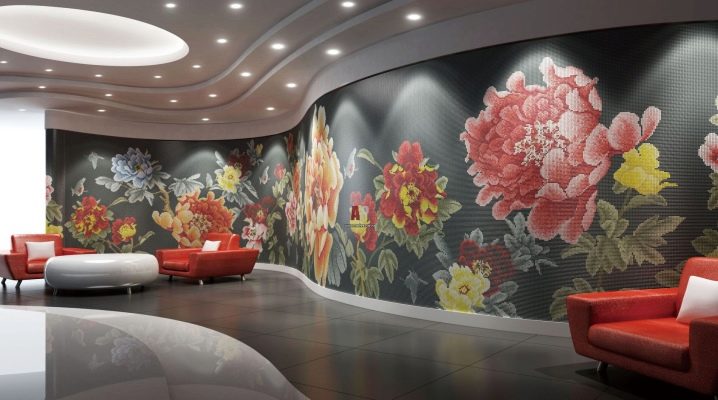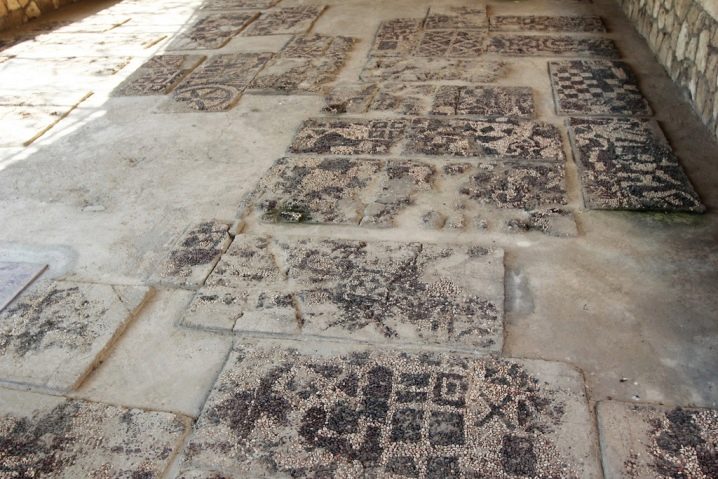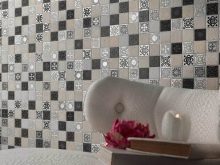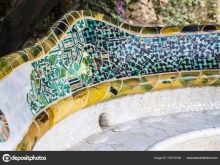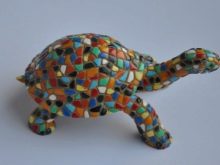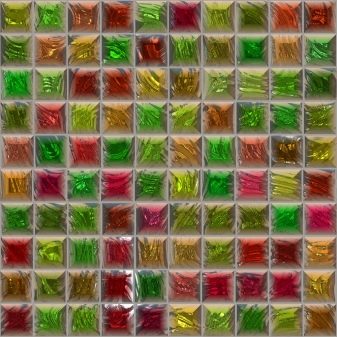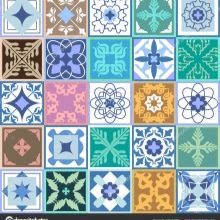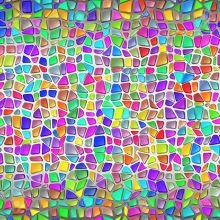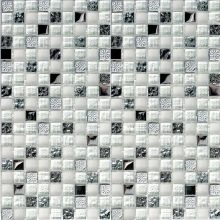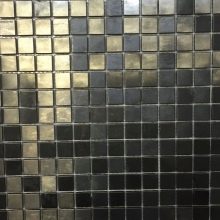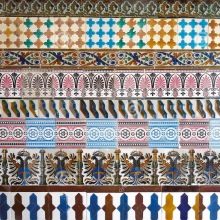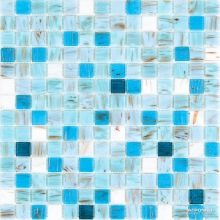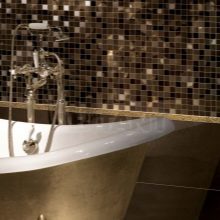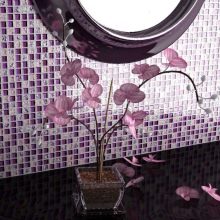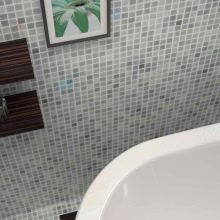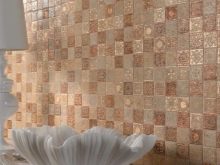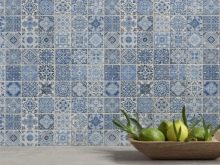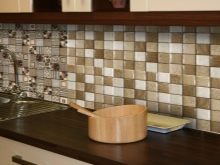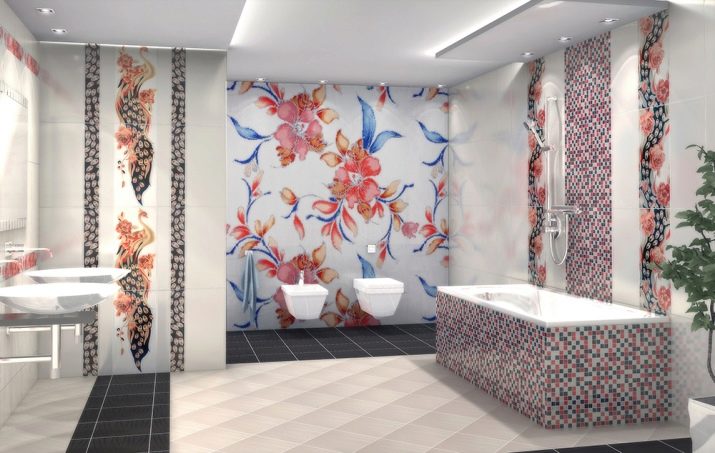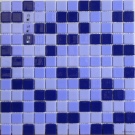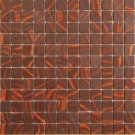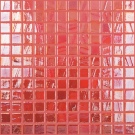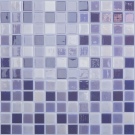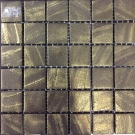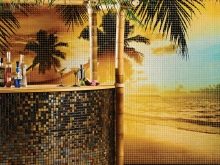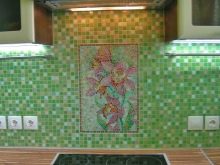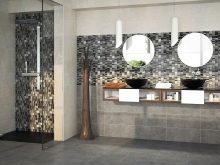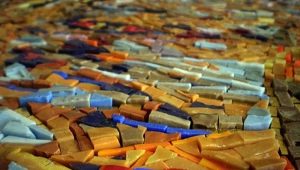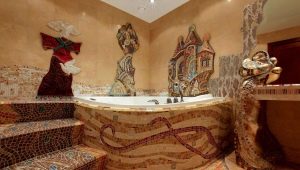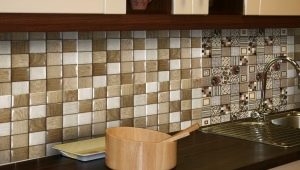Spanish mosaic: the pros and cons
It is not known for certain when the first mosaic appeared. The earliest samples date back to three thousand years BC, were discovered in Mesopotamia (now the countries of the Middle East). The right to be called the birthplace of the mosaic is claimed by several countries, one of which is Spain.
Composition and features
The first mosaic tiles were made of clay cones of red, black and white colors. Other materials could also be used for the base: precious stones and metals, highly valued wood and ivory.
Mosaic from Spain is considered one of the best in the world., thanks to technology using only quality and natural materials.
Mosaic elements have many names (modules, chips, tessera). Their most common form is square, but other shapes are also found. Detailing the picture of the mosaic depends on the size of tesserov. The smaller they are, the clearer the lines and the more accurate the drawing.
Due to the small size of the segments, it is convenient to use them in places that have a complex geometric surface.
Kinds
Vintage secrets were lost over time, with the departure of the masters. But progress does not stand still. Thanks to science, some technologies have been partially restored or refined, and new ones have been created.
Today, the mosaic can be classified by the material from which it is produced:
- Glass. This is the most popular option, a special place is occupied by Venetian glass, which has unique indicators of durability, water and heat resistance, frost resistance and impact resistance. Due to the integral structure of the glass, the impact of microorganisms on it is minimized, which makes it an excellent material for the decoration of swimming pools. Also, glass mosaic differs from the rest of the widest range of colors. It is suitable for ubiquitous domestic use: from flooring to decorating furniture.
- Smalt. This is a special type of glass mosaic. Its distinctive feature are potassium salts and other inclusions that make the glass opaque. Production of mosaic elements occurs at a temperature of 700-800 C.Each chip mosaic mosaic is unique due to its shade. The peculiarity of the technology lies in the fact that you can get up to ten thousand different, non-repeating shades using just one color. This smalt has a rich tone and a kind of internal glow. Even the lightest shades completely exclude the presence of white patches. The properties of such a mosaic are superior to glass. It can be used both indoors and outdoors.
- Ceramics. It can be called the younger sister of ordinary ceramic tiles. The colors and appearance of such a mosaic vary greatly. Its surface can be "aged" - cracks and stains are imitated. The ceramic strength of the mosaic is its advantage. Suitable for general use.
- A rock. In the production of this type of mosaic using various types of natural stone. The basis can be taken as a regular tuff, and expensive jasper. This option is distinguished by the uniqueness of each chip due to the uniqueness of the color and structure of the stone. The surface of such elements is polished or aged. Their sizes do not exceed five centimeters in radius,and the shape can vary from geometrically regular shapes to fragments of various types. It is used mainly for exterior decoration.
- Nontraditional. For the production of mosaics of this type can be used completely different materials. Stoneware or quartz, ordinary or precious metals. Metal segments are considered one of the most expensive, the price of one square meter will vary in the range from 14,000 to 20,000 rubles. And the cost of one gold chip (in fact, gold foil between glass plates) is 4 square meters. cm is 150 rubles. It is used to impart a special chic to the mosaic picture.
Due to the small size of the segments, the mosaic can be used almost everywhere. It can be sold as individual items, and sets. In the second case, the segments are attached to the so-called matrix. This is the most popular option, which does not require large expenditures on the layout of segments.
A picture made up of mosaic elements can be monochromatic, variegated, gradient.
Advantages and disadvantages
Mosaic tile is a very popular material. But each product has its advantages and disadvantages.
pros
- Appearance. Each surface is individual and unique.
- Purity. Mold and fungus are not afraid of such a coating, and it does not require special care.
- Environmental friendliness. Produced from natural materials, it does not harm humans and the environment.
- Durability. Ancient Roman mosaic frescoes, for example, are well preserved to this day.
Minuses
- Cost
- Installation. Working with a mosaic requires more skills than with ceramics.
- Fragility. Despite the strength of the mosaic, dropped heavy objects can leave chips, cracks and scratches.
- Slippery surface. Smooth and beautiful surface requires the use of rugs, otherwise you can easily slip on it.
Brands
Masters passed their secrets from generation to generation since the III. BC. Many Spanish companies still use secret technologies that have passed the test of time. This is one of the reasons Spain’s leadership in the interior mosaic market.
Spanish mosaic quality and luxurious look. It is used everywhere: for decorating apartments, houses and even walking paths.
There are a lot of companies producing mosaics in Spain, among them there are such brands as Vidrepur, Dune, Ezarri, Onix and Ceracasa.
Each of them works in its own direction.
For example, Ezarri produces whole mosaic canvases with ornaments and images.
In production technology Vindrepur metals are used, giving the segments an even more varied color gamut and unusual texture.
Mosaic Dune it differs both in an atypical form of segments and in a huge number of external effects: from the surface “under the tree” to the stained glass canvases.
The types of mosaic are described in more detail in the next video.
